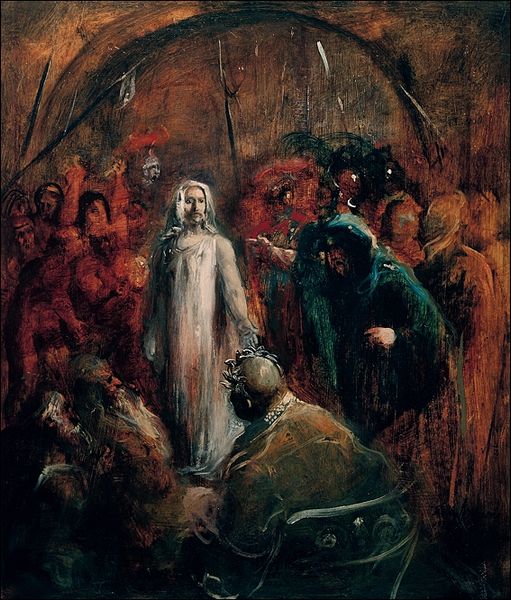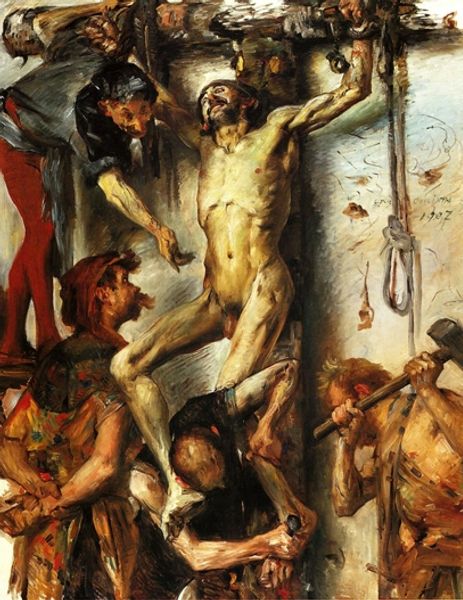
Copyright: Public domain
Lovis Corinth painted 'The Deposition' with oils on canvas, engaging with a long tradition of representational painting. Look closely, and you’ll see how the loose handling of the paint, a quality of substance in itself, charges the scene with immediacy. The body of Christ is not idealized, but rendered in tones of suffering flesh. Corinth employed visible brushstrokes, moving away from the academic precision of earlier eras towards a more direct emotional expression. This approach aligns the painting with the social and political context of its time. Corinth, working in the late 19th and early 20th centuries, lived through a period of rapid industrialization and social upheaval. His choice to emphasize the physical reality of Christ's suffering can be seen as a reflection of these anxieties, a turn away from established forms of authority towards a more visceral and individual experience. By considering the materials, making, and context, we can appreciate how Corinth challenges traditional distinctions between religious icon and human form, between the fine art of painting and the material realities of social experience.
Comments
No comments
Be the first to comment and join the conversation on the ultimate creative platform.













